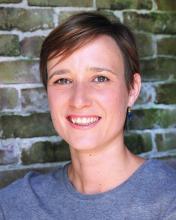The quest for earlier diagnosis and treatment of polycystic ovarian syndrome may be branding too many young women with an unnecessary – and emotionally burdensome – tag, experts fear.
There’s little doubt that the classic phenotypes of PCOS, driven by androgen excess, can impair fertility and increase the long-term risks of cardiovascular complications and type 2 diabetes mellitus. But the recent expansion of those phenotypes to include categories that are not androgen driven has vastly increased the number of diagnosable cases, especially in teens. Recent analyses suggest that up to 21% of teenage girls now could potentially fit one of the phenotypes – a considerable increase from the 4%-6% prevalence associated with the original National Institutes of Health criteria of 20 years ago.
Some of these newly established phenotypes include signs and symptoms that may be driven by genetics or lifestyle instead of hormones, like hirsutism, acne, and obesity. Other problems may resolve spontaneously as a girl matures or loses weight, leaving her with a perfectly normal physiology, but a lifelong PCOS label.
Tessa Copp, a PhD student at the University of Sydney, is particularly interested in this issue. She and her mentor, psychologist Jesse Janssen, PhD, also of the university, recently published their analysis of the potential harms of these ever-proliferating PCOS diagnostic categories (BMJ. 2017;358:j3694).
“Women with a diagnosis of PCOS tend to have higher rates of depression and anxiety, a negative body image, and reduced relationship and sexual satisfaction,” Ms. Copp said in an interview. “But it’s unclear if those are because of the condition or the impact of getting a diagnosis associated with infertility and poor long-term health outcomes.”
“This label can induce fear and anxiety about the future. And young women may feel pressured to make altered life decisions about their future fertility at times when they may not be prepared to do so.”
Evolving diagnostic criteria
Three sets of diagnostic criteria have been proposed over the past 3 decades, said Ricardo Azziz, MD, chief officer of academic health and hospital affairs for the State University of New York system, and a renowned expert on PCOS. Dr. Azziz has had a hand in constructing several of the current diagnostic criteria.
In the 1990s, the key diagnostic features of PCOS were clinical or biochemical hyperandrogenism and chronic oligoanovulation. But in 2003, members of the European Society for Human Reproduction and Embryology and the American Society for Reproductive Medicine met in Rotterdam, the Netherlands, to review the data and refine these criteria. For the first time, ultrasound entered the picture; polycystic ovarian morphology became part of the diagnostic criteria.
A diagnosis using the new Rotterdam criteria required two of three characteristics: hyperandrogenicity, chronic ovulatory dysfunction, and polycystic ovarian morphology. These changes substantially expanded the number of diagnosable patients, Dr. Azziz said in an interview. Many have since criticized the inclusion of polycystic ovaries, because they are often present in women who don’t have any other PCOS symptom, especially younger women.
In 2006, the Androgen Excess & PCOS Society took a crack at the issue. They conducted a large data review and concluded that PCOS diagnosis should be based on the presence of clinical or biochemical hyperandrogenism in combination with ovarian dysfunction, thus taking the ovaries completely out of the picture.
This definition, however, resulted in some confusion in clinical practice, Dr. Azziz said. So in 2012, the National Institutes of Health gathered an international panel of PCOS experts, who reviewed the pros and cons of the diagnostic system. The panel endorsed the broader Rotterdam criteria, which included ovarian morphology, but issued a detailed description of four phenotypes. These are now the ones most often used in clinical practice:
• A. Hyperandrogenicity (clinical or biochemical) with ovarian dysfunction and polycystic ovarian morphology
• B. Hyperandrogenicity plus ovarian dysfunction
• C. Hyperandrogenicity plus polycystic ovarian morphology
• D. Ovarian dysfunction plus polycystic ovarian morphology
When is PCOS not PCOS?
Although Dr. Azziz has been a leader in this effort to impose diagnostic order, he also gets the system’s potential problems, especially when it comes to teenagers.
“I have been involved in each of these successive expansions, I understand the concern of people who worry that we are getting further away from classic PCOS, especially by adding phenotypes with normal ovulation. Are these actually the same disorder? Do they imply the same risks? Using the Rotterdam criteria does capture the greatest number of patients, but we have to be very careful of these phenotypes.”
Phenotypes A and B have accrued the most long-term data and clearly carry associated long-term cardiovascular and metabolic risks. For these women, Dr. Azziz said, early diagnosis leads to early treatment and a jump start on modifying those risks.
The picture is much different for phenotypes C and D. “As we get more data, it becomes increasingly clear that types C and D don’t behave in the same way or carry the same risks.”
Part of the problem is that some of the secondary definitions of signs and symptoms are themselves not well defined and don’t account for other possible etiologies, said Lubna Pal, MD, another PCOS expert. Hirsutism and acne are good examples. “What about the young woman who is overweight, and complains about acne and being hairy? You might think of these as PCOS symptoms, but in her history, find out that her mother or sisters also have a lot of hair and had acne. How do you treat that information then?”
None of the classic signs and symptoms of PCOS have been validated in teens, said Dr. Pal, director of the Polycystic Ovary Syndrome (PCOS) Program at the Yale Reproductive Endocrinology center, New Haven, Conn. There are no validated cutoffs for abnormal androgen in teen females, and no one really knows whether the adult values are meaningful in younger women.
Nor is there an age-specific cut-off for “polycystic-appearing ovaries,” Ms. Copp said. “Right now, the Rotterdam criteria define this as 12 or more follicles on ultrasound, but that was based on the ultrasound technology available at the time – and that count might be normal in early adulthood.” She noted that in 2014, an expert panel recommended increasing the threshold to more than 24 follicles per ovary, in accordance with findings using advanced imaging techniques. This recommendation has not been adopted.
Some classic symptoms, like menstrual irregularity, acne, and high body weight, can also be part of a transitory developmental phase as a girl moves through puberty into a more adult physiology. Others, like insulin resistance, can resolve if the patient loses weight, Dr. Pal said. So are those things really indicators of a true PCOS state?
These questions all need to be answered, said Ms. Copp. In the meantime, young women are being tagged as having a chronic disorder that might not be there, or if it is, might spontaneously resolve.
“There are at least three studies in different populations that have found that the prevalence of PCOS falls rapidly after 25 years of age,” she said. “So these signs and symptoms of PCOS might really be transitory for many.”
Women with “true,” androgen-driven PCOS benefit from early identification, treatment, and metabolic and cardiovascular risk management. But everyone interviewed for this article agreed that a PCOS label for every young woman who is overweight, hirsute, acne-prone, and irregular in her periods, is inappropriate and potentially harmful. All three mentioned that while a diagnostic label may bring an element of relief – as in “I finally know what’s going on” - it carries attendant anxiety about a future with an incurable disorder which may not even impart much long-term risk, or even daily bother. There is also a risk of potentially unnecessary medical screenings and interventions, Ms. Copp noted.
Treat the syndrome – or the patient?
A better way to proceed, Dr. Pal suggested, is to drop the labels and embrace the patient’s experience.
“I ask them, ‘What is your bother?’ Is it the irregular periods? The acne? The hair? The weight? It may be that a more mature woman wants to start a family, and that is the issue we address. Or for younger women, it may be the other issues, and for them, that should be our primary concern.”
Dr. Azziz agreed.
“We need to confirm the diagnosis, and then confirm any related disorders, and make sure our patients are healthy in other ways. PCOS alone is not so much a concern. We simply cannot treat all our patients the same. Instead, we need to get very clear with them about their own objectives. Are they trying to lose weight or get pregnant? We are talking about basic personalized medicine here, not labeling just for the sake of giving something a name.”
Ms. Copp’s thoughts were in the same vein as well.
“Do all these women really need to be ‘diagnosed,’ or can we monitor their symptoms and treat what is bothersome without a label? A diagnostic label doesn’t change the treatment, especially for young women whose PCOS symptoms might be transient and not require treatment at all.”
None of those interviewed for this article had any relevant financial disclosures.
On Twitter @Alz_Gal



